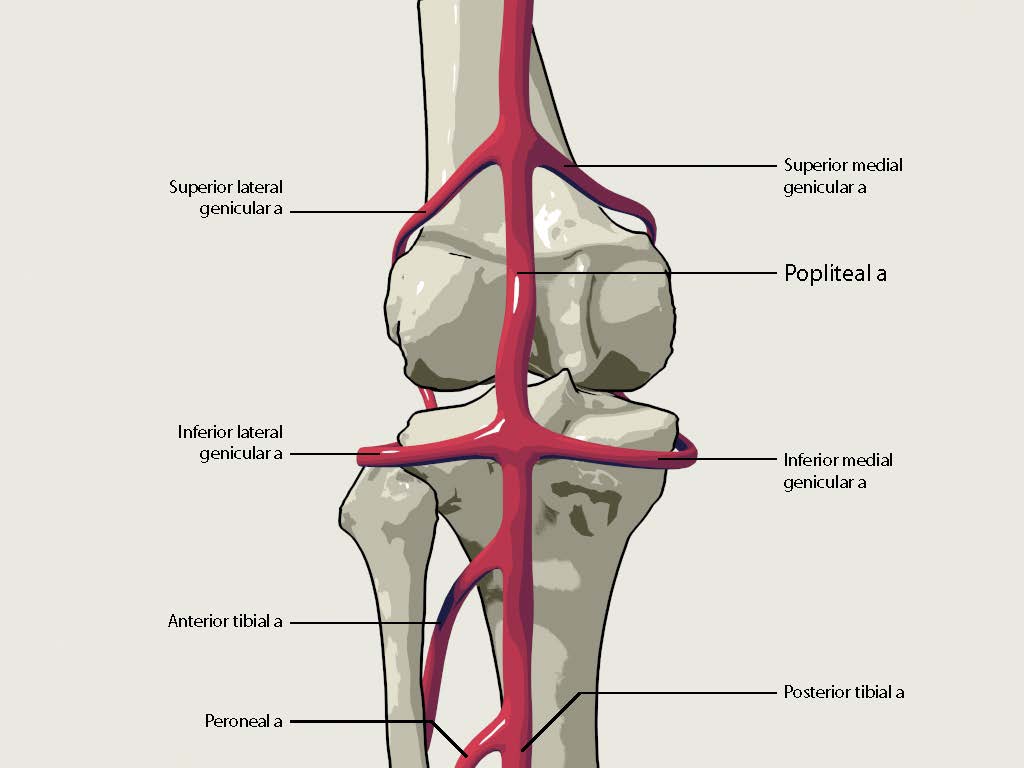Makindo Medical Notes"One small step for man, one large step for Makindo" |
|
|---|---|
| Download all this content in the Apps now Android App and Apple iPhone/Pad App | |
| MEDICAL DISCLAIMER: The contents are under continuing development and improvements and despite all efforts may contain errors of omission or fact. This is not to be used for the assessment, diagnosis, or management of patients. It should not be regarded as medical advice by healthcare workers or laypeople. It is for educational purposes only. Please adhere to your local protocols. Use the BNF for drug information. If you are unwell please seek urgent healthcare advice. If you do not accept this then please do not use the website. Makindo Ltd. |
The Popliteal artery
-
| About | Anaesthetics and Critical Care | Anatomy | Biochemistry | Cardiology | Clinical Cases | CompSci | Crib | Dermatology | Differentials | Drugs | ENT | Electrocardiogram | Embryology | Emergency Medicine | Endocrinology | Ethics | Foundation Doctors | Gastroenterology | General Information | General Practice | Genetics | Geriatric Medicine | Guidelines | Haematology | Hepatology | Immunology | Infectious Diseases | Infographic | Investigations | Lists | Microbiology | Miscellaneous | Nephrology | Neuroanatomy | Neurology | Nutrition | OSCE | Obstetrics Gynaecology | Oncology | Ophthalmology | Oral Medicine and Dentistry | Paediatrics | Palliative | Pathology | Pharmacology | Physiology | Procedures | Psychiatry | Radiology | Respiratory | Resuscitation | Rheumatology | Statistics and Research | Stroke | Surgery | Toxicology | Trauma and Orthopaedics | Twitter | Urology
Related Subjects: |The Coronary Arteries |The Axillary Artery |The Brachial Artery |The Carotid Artery |The Femoral Artery |The Popliteal artery |The Subclavian Artery |The Iliac Artery |The Brachial Artery |The Axillary Artery |The radial and Ulnar Artery
The popliteal artery is a major blood vessel located behind the knee. It is a continuation of the femoral artery and supplies oxygenated blood to the knee joint, thigh, and calf muscles. The popliteal artery plays a crucial role in maintaining the blood flow to the lower leg and foot.
Anatomy of the Popliteal Artery
- Origin :
- The popliteal artery originates as a continuation of the femoral artery after it passes through the adductor hiatus in the thigh.
- Course :
- Travels through the popliteal fossa, a shallow depression located at the back of the knee.
- Continues downward, running close to the posterior surface of the knee joint.
- At the lower border of the popliteus muscle, it bifurcates into the anterior and posterior tibial arteries.
Branches of the Popliteal Artery
- Muscular Branches :
- Supply: The hamstring muscles and muscles of the calf.
- Genicular Branches :
- Superior Medial Genicular Artery
- Superior Lateral Genicular Artery
- Middle Genicular Artery
- Inferior Medial Genicular Artery
- Inferior Lateral Genicular Artery
- Function: These branches form an anastomotic network around the knee joint, providing collateral circulation.

Functions of the Popliteal Artery
- Oxygenated Blood Supply :
- The popliteal artery supplies oxygenated blood to the knee joint, muscles of the thigh and calf, and other structures around the knee.
- Collateral Circulation :
- The genicular branches of the popliteal artery form a network that provides collateral circulation, ensuring continuous blood flow to the knee joint and surrounding areas even if the main arterial pathway is obstructed.
Clinical Relevance
- Popliteal Artery Aneurysm :
- An abnormal dilation of the popliteal artery, which can lead to thrombosis, embolization, or rupture.
- Symptoms: Often asymptomatic; may present as a pulsatile mass in the popliteal fossa, leg pain, or ischaemia.
- Diagnosis: Ultrasound, CT angiography, or MRI.
- Treatment: Surgical repair or endovascular stenting.
- Peripheral Artery Disease (PAD) :
- Atherosclerosis in the popliteal artery can lead to reduced blood flow to the lower leg and foot.
- Symptoms: Claudication (pain in the leg during exercise), leg numbness, or weakness.
- Diagnosis: Ankle-brachial index (ABI), Doppler ultrasound, CT angiography, or MRI.
- Treatment: Lifestyle changes, medications, angioplasty, or surgical bypass.
- Popliteal Artery Entrapment Syndrome :
- A condition where the popliteal artery is compressed by surrounding muscles or tendons, leading to reduced blood flow.
- Symptoms: Leg pain, cramping, and numbness, especially during exercise.
- Diagnosis: Doppler ultrasound, MRI, or angiography.
- Treatment: Surgical decompression or vascular reconstruction.
- Popliteal Artery Injury :
- Injuries to the popliteal artery can occur due to trauma, such as knee dislocations, fractures, or penetrating injuries.
- Symptoms: Severe pain, swelling, decreased pulse, and ischaemia of the lower leg.
- Treatment: Surgical repair or vascular reconstruction is often required.
Summary
The popliteal artery is a critical blood vessel that supplies oxygenated blood to the knee joint, thigh, and calf muscles. It originates as a continuation of the femoral artery and travels through the popliteal fossa, giving off several important branches before bifurcating into the anterior and posterior tibial arteries. Understanding the anatomy and clinical relevance of the popliteal artery is essential for diagnosing and managing conditions such as aneurysms, peripheral artery disease, entrapment syndrome, and injuries.